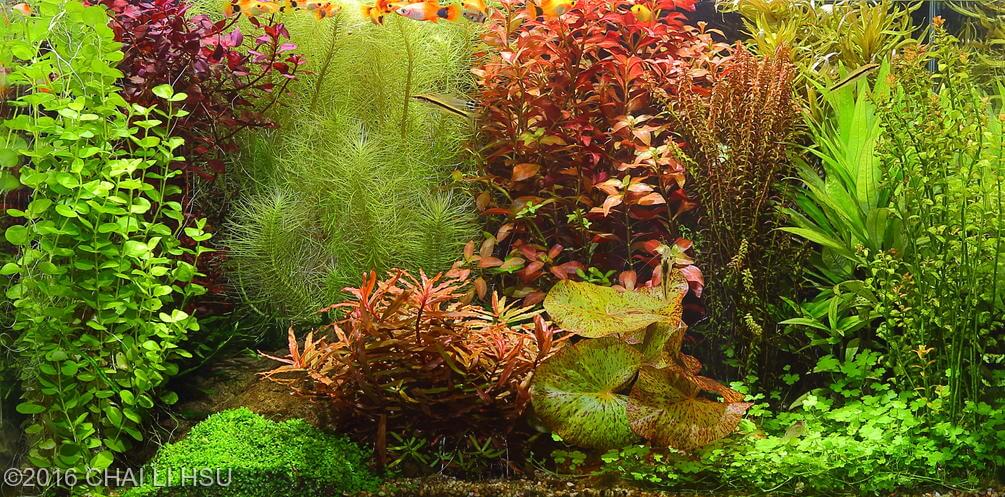A beautiful tank is very much dependent on a good sense of aesthetic design. The fine art of arranging plants and hardscaping items, including that of driftwood and rocks, is a source of endless inspiration for the budding or established aquarium hobbyist. If you are looking to aquascape your tank environment and don’t know where to start, or just want to change up the look, here are some options to help you. If you have specific questions or need more information email us at fish@hikariusa.com for help.
Depending on your tank inhabitants and the look you desire, we’ve identified four distinct aquascaping themes:
1. Nature Aquarium

Probably the one most of you picture in your mind when you think of an aquarium. This style of aquascaping has long reigned as the most popular. Dating back decades where it was developed by a Japanese aquarist using style design concepts found in natural spaces, nature aquariums are inspirational because of their use of rocks, driftwood and plants aligned to insinuate larger mountain, rainforest and other elements of nature. The point of these spaces is to prioritize ambience and flow to echo where you want to be or visit some day in the wild outdoors.
2. Minimalist Aquarium

Otherwise referred to as the Iwagumi layout, this aquascaping style was developed by the aquarist Takashi Amano. The intention with this approach is to reflect a love for beauty, simplicity and spirituality. Features often include a focal rock formation in addition to structural harmony accompanied by using any number of smaller stones that create a fluency of space.
3. Dutch Aquarium

https://aquascapinglove.com/wp-content/uploads/2019/07/dutch-aquarium-aquascape-3.jpg
This style was popularized in the 1930s in the Netherlands, mostly pioneered by members of the Dutch Society for Aquarists. The approach here is less attention to the use of hardscaping materials and instead, focusing on the soft growth and arrangement of underwater aquatic plants. The final arrangement should exemplify density, contrast and subtle use of color. Think of a natural forest in your aquarium.
4. Biotope Aquarium

Favored by mature fishkeepers, this type of aquascaping closely replicates natural environments and strives for strict accuracy for its inhabitants. Heiko Blehr is likely the most famous explorer to focus more recently on this approach. Aquarists pick a specific geographic location or stick to a singular species and recreate their true natural habitat to the best of their ability with the materials available to them.
Whichever option you chose or if you decide a mixture of any of these is best for your specific situation, it is important to note that in the end, beauty is in the eye of the beholder. Concentrate on what you know you will love and enjoy the most!

